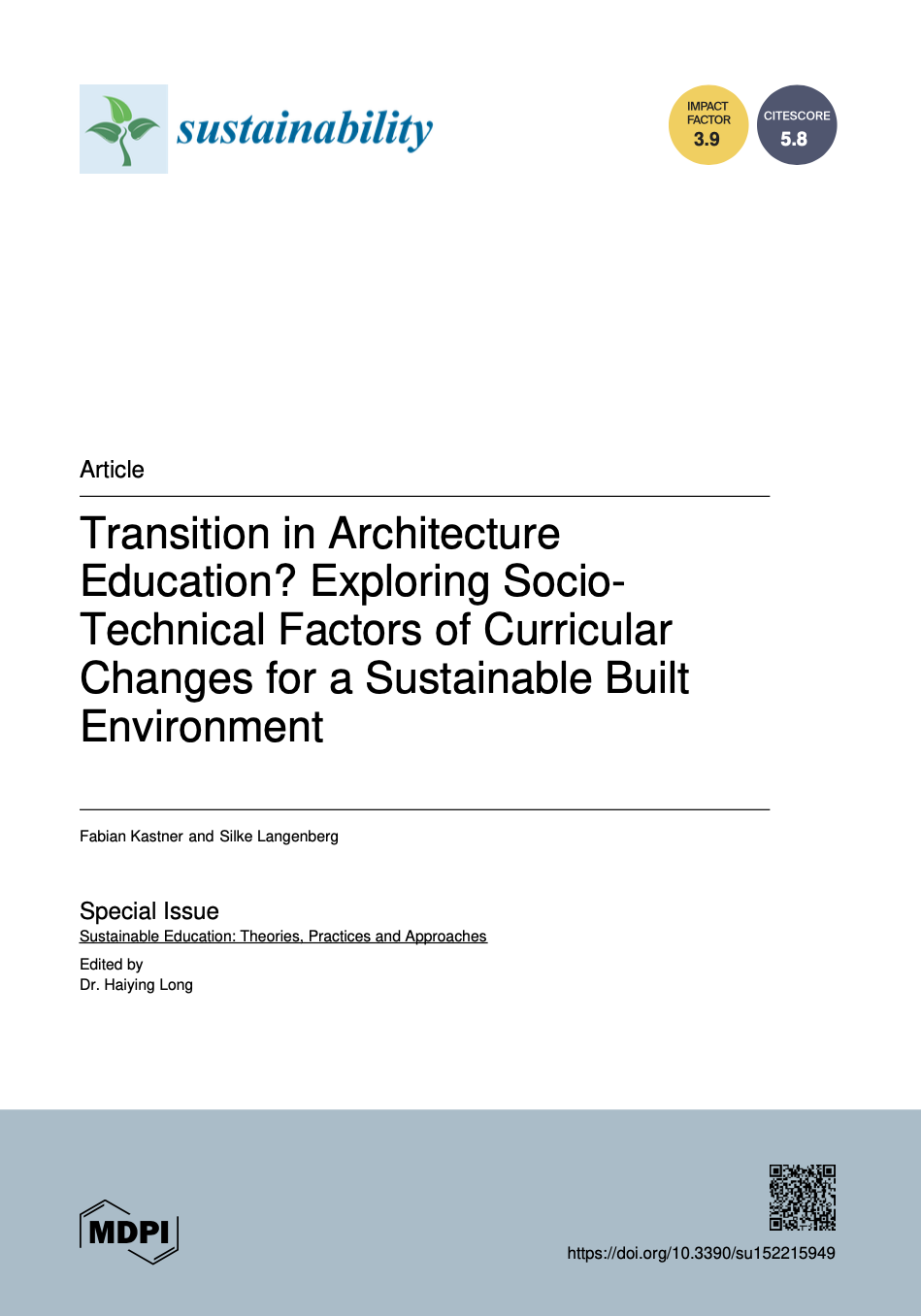
Kastner, Fabian, and Silke Langenberg. 2023. “Transition in Architecture Education? Exploring Socio-Technical Factors of Curricular Changes for a Sustainable Built Environment.” Sustainability 15 (22): 15949. https://doi.org/10.3390/su152215949.
Curricular changes in architecture can support to meet the increased demand for sustainability in higher education (HE). Identifying their associated factors is necessary to understand ongoing and future transitions in architecture education. Transition management (TM) frameworks have been frequently used to analyze structural changes in various institutions but have received little attention in architecture education. This study explores the Swiss Federal Institute of Technology (ETH Zurich) as a case study, focusing on its architecture curricula within 32 years from 1990 to 2022, corresponding to multiple generations of academic careers. A multiple-level perspective (MLP) document analysis on curricular changes is conducted in three steps, drawing on a specific perspective on sustainability in architecture. First, generic characteristics that may influence curricular changes are identified from the literature. Second, shifts in the undergraduate curriculum of ETH Zurich are systematically mapped. Third, a classification of implemented curricular shifts results in seven nuanced variations in generic factors. These socio-technical factors involve the development and dissemination of new disciplinary (1) and interdisciplinary (2) approaches to a sustainable built environment (SBE), a relocation of the viewpoint on sustainability from physiology/hygiene to building physics (3), experimentation with inquiry-based learning in niches (4), extended spheres of influence in teaching (5), early committed intra-faculty opinion leaders (6), and the formation of educational networks (7). The proposed approach based on longitudinal curriculum mapping offers a way to locate structural curricular changes, identify hidden educational trends, and inform institutional changes.